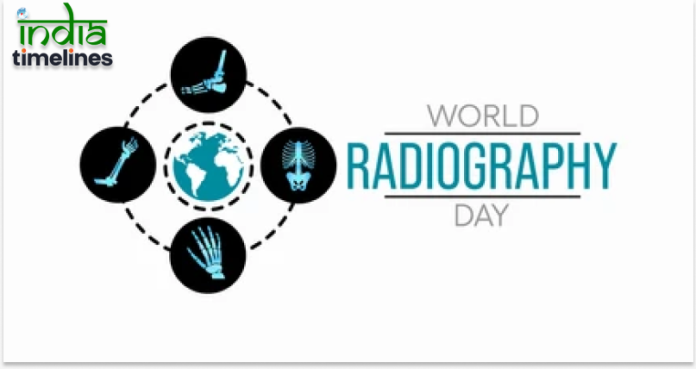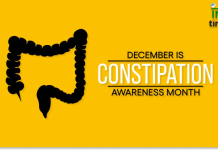
Every year on November 8th, World Radiography Day is celebrated to mark the discovery of X-rays and to recognize the critical role that radiographers play in modern healthcare. This day not only honors the legacy of Wilhelm Conrad Roentgen, the scientist who discovered X-rays, but also highlights the life-saving impact of medical imaging in diagnosing and treating patients. Let’s explore why this day matters and how radiography has transformed the medical world.
What is World Radiography Day?
World Radiography Day is observed annually on November 8th, the anniversary of Wilhelm Conrad Roentgen’s discovery of X-rays in 1895. This groundbreaking discovery paved the way for the field of radiography, revolutionizing medical diagnostics and treatment. The day celebrates both the historical achievement of X-rays and the ongoing contributions of radiographers who utilize modern imaging techniques to save lives.
The Discovery of X-rays
In 1895, German physicist Wilhelm Conrad Roentgen discovered X-rays while experimenting with cathode rays. He noticed that certain rays could pass through human tissues and produce images of bones and internal structures on photographic plates. This accidental discovery revolutionized medicine, giving doctors a non-invasive way to look inside the human body without surgery. In recognition of his work, Roentgen received the first-ever Nobel Prize in Physics in 1901.
The Role of Radiographers
Radiographers are healthcare professionals trained to operate imaging equipment and perform diagnostic tests using X-rays, CT scans, MRIs, and other technologies. Their expertise is essential in accurately capturing images that doctors use to diagnose illnesses, plan treatments, and monitor progress. From identifying broken bones to detecting tumors, radiographers play a crucial role in ensuring patients receive timely and accurate medical care.
Radiography’s Impact on Healthcare
The introduction of radiography revolutionized the way doctors diagnose and treat diseases. Before X-rays, doctors had to rely on physical examinations and exploratory surgery to determine the nature of internal injuries or diseases. Today, radiography provides a safer, quicker, and more accurate method of diagnosis. Whether it’s detecting fractures, identifying infections, or locating cancerous growths, radiography has saved countless lives.
Different Types of Medical Imaging
While X-rays were the first form of radiography, medical imaging has since evolved to include a variety of techniques, each serving a unique purpose:
1. X-rays
X-rays are the most commonly used form of medical imaging, especially for detecting bone fractures, dental issues, and certain infections.
2. CT Scans (Computed Tomography)
CT scans provide a more detailed, 3D image of the body’s internal structures, allowing doctors to see organs, tissues, and bones with greater precision.
3. MRIs (Magnetic Resonance Imaging)
MRI uses powerful magnets and radio waves to create detailed images of soft tissues, such as the brain, muscles, and ligaments. It’s particularly useful in diagnosing neurological conditions.
4. Ultrasounds
Ultrasounds use sound waves to create images of internal organs and are often used during pregnancy to monitor fetal development, as well as to examine organs like the heart and kidneys.
The Evolution of Radiography Technology
Radiography has come a long way since Roentgen’s time. Today, digital imaging technology allows for clearer images, faster results, and reduced radiation exposure. Innovations like 3D imaging, portable X-ray machines, and real-time imaging systems have significantly improved patient care. As technology continues to evolve, radiographers and medical professionals have more powerful tools at their disposal to diagnose and treat a wide range of conditions.
Safety in Radiography
Radiation exposure is a natural concern when discussing radiography, but safety measures have greatly improved over the years. Radiographers are trained to minimize radiation exposure through techniques such as lead shielding, precise imaging angles, and limiting the number of exposures. These safety protocols ensure that both patients and radiographers are protected from unnecessary radiation.
Why We Celebrate World Radiography Day
World Radiography Day is not just about celebrating a historical discovery; it’s also about recognizing the contributions of radiographers and the life-saving impact of radiography. The day serves to raise awareness about the importance of medical imaging and its role in modern healthcare. It’s also an opportunity to educate the public about the field and encourage more people to consider careers in radiography.
Global Observances and Events
Around the world, World Radiography Day is marked by various events and activities. Hospitals, medical schools, and radiology departments often hold seminars, workshops, and exhibitions to highlight advances in the field. Some organizations also use the day to promote patient safety in radiography, while others focus on training and educating the next generation of radiographers.
The Future of Radiography
The future of radiography looks promising, with advancements in technology and artificial intelligence (AI) poised to make significant contributions to the field. AI is being integrated into diagnostic imaging to help interpret results more quickly and accurately, allowing for earlier detection of diseases. As AI becomes more advanced, it could assist radiographers in identifying anomalies, streamlining the diagnostic process.
Challenges Faced by Radiographers
While radiography is an essential field, it comes with its own set of challenges. One of the main issues is the shortage of trained radiographers, which can put pressure on healthcare systems. Additionally, as technology advances, radiographers must continuously update their skills to stay current with the latest imaging techniques and safety protocols.
Radiography in Non-Medical Fields
Radiography isn’t limited to medicine. It also plays a crucial role in other industries, such as:
1. Industrial Radiography
Industrial radiography is used to inspect materials and structures, such as pipelines, aircraft, and buildings, for defects without causing damage. It helps ensure the safety and integrity of these structures.
2. Security and Safety
X-ray technology is used in security settings, such as airports and government buildings, to scan luggage and detect hidden objects.
3. Engineering
Radiography is also used in engineering to examine the internal structures of materials, detect flaws, and ensure quality control.
How to Become a Radiographer
Becoming a radiographer requires a combination of education and training. Prospective radiographers typically need to complete a degree in radiography or medical imaging, followed by hands-on experience in a clinical setting. Many countries also require radiographers to be licensed or certified, which involves passing an exam that tests their knowledge of imaging techniques, anatomy, and patient care.
Conclusion
World Radiography Day is a time to celebrate the monumental impact that radiography has had on healthcare and beyond. From diagnosing broken bones to detecting life-threatening conditions, radiographers play an essential role in saving lives. As we honor their contributions, we also look to the future of medical imaging and the continued evolution of this vital field.
FAQs
1. Why is World Radiography Day celebrated on November 8th?
World Radiography Day is celebrated on November 8th to mark the anniversary of the discovery of X-rays by Wilhelm Conrad Roentgen in 1895.
2. What is the role of a radiographer?
A radiographer is a healthcare professional who operates imaging equipment like X-rays, CT scanners, and MRIs to help diagnose medical conditions and assist in patient treatment.
3. How has radiography evolved over time?
Radiography has evolved from basic X-rays to advanced digital imaging techniques, including CT scans, MRIs, and ultrasounds. Modern radiography is faster, more accurate, and safer for patients.
4. What are the safety measures in radiography?
Radiographers use lead shielding, minimize exposure times, and apply precise imaging techniques to ensure the safety of both patients and medical staff from unnecessary radiation.
5. Can radiography be used outside of medicine?
Yes, radiography is also used in industries like security, engineering, and construction to inspect materials and structures for defects, ensuring safety and quality.



































